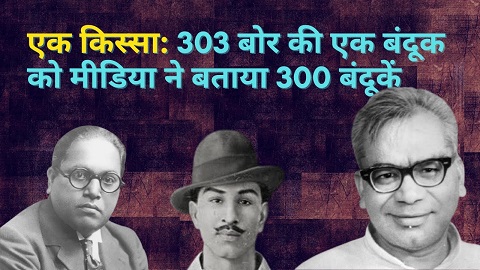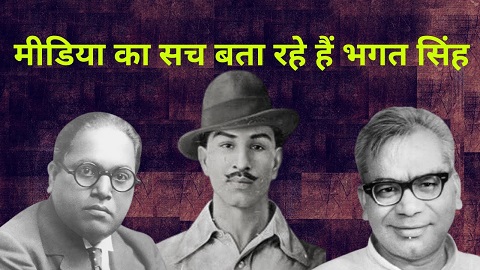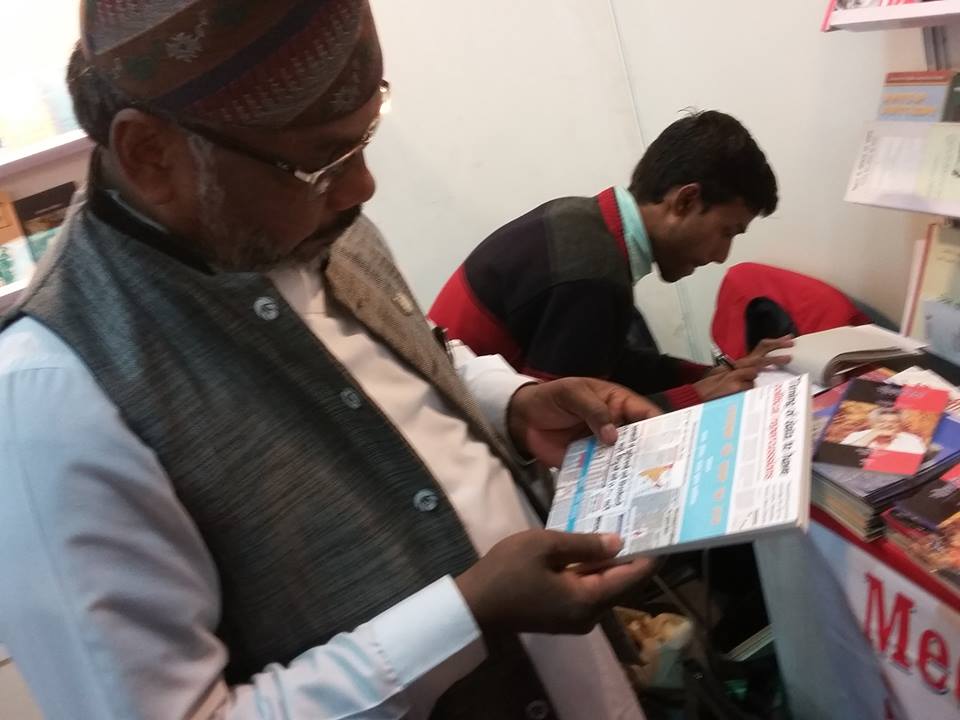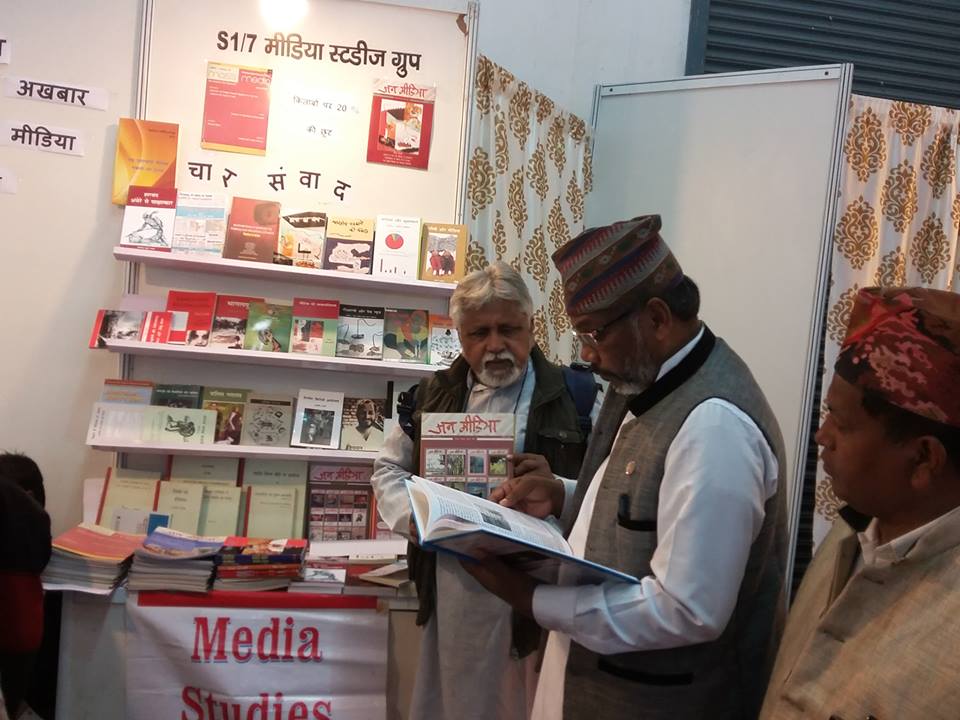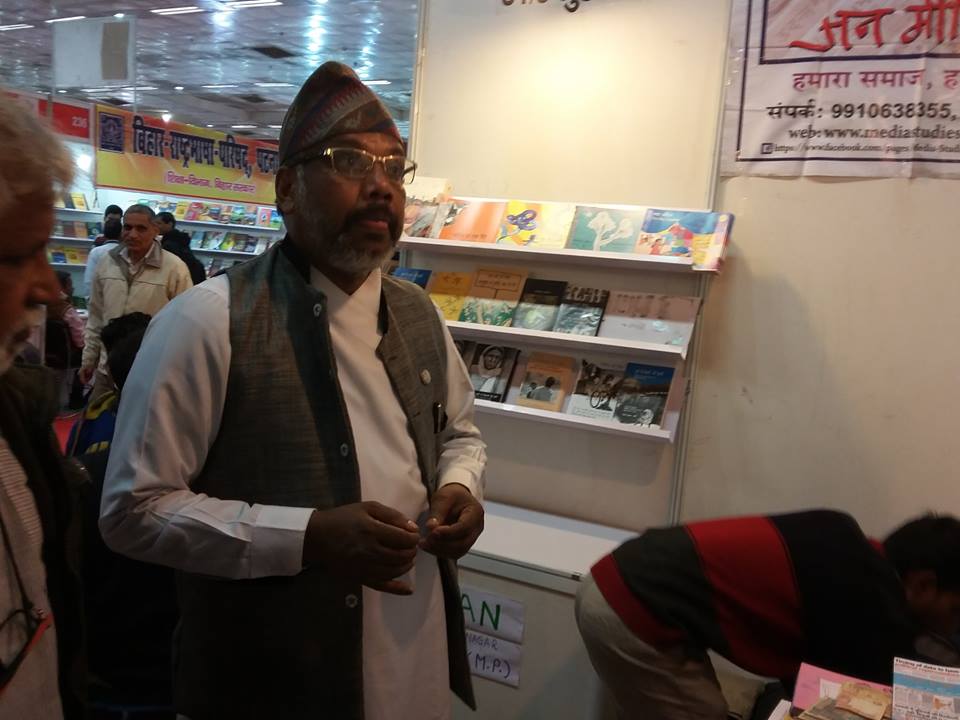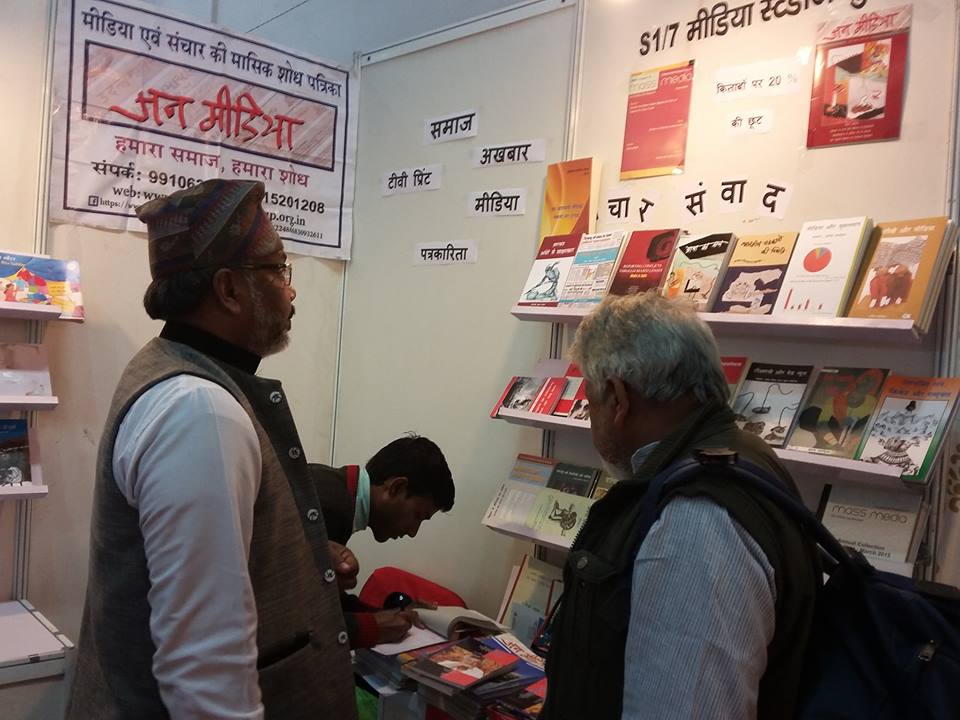Barnali Ray
Introduction
Tools and instruments are so intensely worldly objects that we can classify a whole civilization using them as criteria. We do speak of the ‘stone’, ‘iron’, ‘steam’ and ‘computer’ ages. We also characterize nations by reference to technologies in which they have played a prominent developmental role and which are largely symbolic of their culture. For instance we associate Holland with windmills, US with cars, Japan with microelectronics. It is often argued that it is the availability of different machines that defines what it is like to live in a particular place at a particular time. In the 21st century, however, it will be difficult to pinpoint for which of its many technologies will be remembered by future generations. This relationship between technology and society has often been seen as common sensical, but theorists often analyse this relationship in terms of technological determinism. The concept has two parts. The first part is that technological developments take place outside society, independently of social, economic, and political forces. New or improved products or ways of making things arise from the activities of the inventors, engineers and designers following an internal, technical logic that has nothing to do with social relationships. The second part states that technological change causes or determines social change which does have an impact on culture as well.
The last two decades have witnessed a change in media landscape with the widespread diffusion of new media. New media, according to Leung (2004), has changed the way people work, communicate and spend their leisure time. It has brought about material transformation of our social fabric and as Castells (2000) mentions; it allows formation of a new form of social organization and social interactions. The rise of network society is one such manifestation which itself is the result of embracing the new information technologies. Technology facilitates diffusion of ideas and practices that affect not only the economic dimensions but the social and cultural dimensions as well.
New Media, as a term, indicates more about contexts of media practices rather than focusing only on technologies. Computer mediated communication which is essentially a new media, has affected acquisition, manipulating, storage and distribution of communication. Manovich (2001) argues that new media has affected all types of media like the text, still images, moving images and spatial constructions. The expansions of computer networks and digital technology have widely contributed towards the development of new forms of communication which Thompson (1995) says has created new forms of action and interaction and new kinds of social relationships – forms that are different from the kind of face-to-face interaction which has prevailed for most of human history.’ Castells (2000) view new media as a potential tool for transforming human lives and society.
Diffusion of new media into the daily lives has changed the way youths spend their free time. There is also a need to probe into the complex interface of new media and leisure activities. There has been a transformation in the lives of urban youth, their lives are more global now as people meet and interact with people of different nationalities. There are exchange of ideas and discussions on different issues. These will lead to transformations in cultural practices as people will be more receptive to new ideas and adapt to new ways of life.
Millennials and New Media Technology
Millennials are the biggest consumers of new media technology. Millennials, referred to the generation born between 1980 to 2000, are also known as the digital generation because of their dependence on technology for various purposes. Different agencies have compiled data to show this dependence. A study on US millennials (US Millennials, 2016) showed that people in the age group of 25 years to 34 years have the highest monthly average of internet usage among all the age groups. Similarly in India, according to the reports published by the Internet and Mobile Association of India (Internet Usage in India, 2018), there was a total of 481 million internet users in December, 2017 and by the year 2020 an estimated 67 percent of internet users will be below the age of 35 years. Morgan Stanley report on India’s Millennials (2017) stated that millennials spend 65% of their online hours on emailing, social media and entertainment activities such as watching music and movies. This has become possible because of globalization and increased inter-connectivity among people, which in turn has resulted in social transformation. This implies (a) millennials are spending time with this new media technology and (b) new media has altered leisure practices of people having access to this technology. However, literature on the influences of new media technology on leisure is very scarce; hence a study on this relationship becomes imperative.
Different research studies have been carried out to understand the relationship between this technology access and changes in leisure practices. Need based studies on transformation in leisure practices have been studied by scholars ( Park, 2009; Raacke, 2008 ) and the needs identified are socializing, entertainment, self-status seeking and information. Researchers have applied the users and gratifications theory to understand the reasons for the adoption of new technology. A study conducted by Hassee and Young (2010) based on survey and interview method revealed six key dimensions of gratifications experienced by users namely pastime, affection, fashion, share problems, sociability and social information. Another study conducted by Shao (2008) observed that gratifications experienced by of User Generated Media are participating, producing and consuming. Leung and Lee (2004) conducted a study on quality of life and use of internet and new media such as internet for sociability, internet for fun seeking and information seeking, and new media finds a positive correlation with social support. LaRose and Eastin (2004) found similar factors like the need for information-seeking, entertainment, and social needs to be the most prevalent.
Research Objectives
- To generate a detailed study on the shift from traditional to technologically facilitated leisure activities
- To identify the gratifications experienced from new media usage for leisure
- To study the impact new and social media on the youth, which impacts their cultural orientations
Research Questions
- How has New Media come to be a mode of leisure for the urban youth of Bhubaneshwar?
- What are the motivations for youth to adopt new media for leisure activities?
- What is the resultant impact on youth culture and behaviour?
Methodology
Survey questionnaire have been administered to 300 samples based in the locality of Bhubaneswar Municipal Corporation comprising of 67 wards. The sample include typical middle class bastions in the age group of 18 years to 35 years. Random sampling method has been used in order to understand the extent of usage and the nature of usage among students, housewives and professionals. The objective of the survey is to find out the cultural changes emerging out of such usage.
Findings
Digital leisure an outcome of weakening of social ties
Mobile phones played an important role in initiating the process of dependence on technology for leisure activities. Respondents started using mobile phones as early as eleven years of age for watching videos for completing school projects. Mobile phones in initial stage was used for and limited to search for information. Parents rarely objected to this as the usage was related to academics and was being used at home. Parents considered this usage safe and reliable than playing outside with friends.
Lack of parental surveillance while using mobile phones is one of the factors that lead to its continuous usage. Lack of surveillance implies that the user can access any content at any point of time. This, in turn, leads to exposure to virtual world which is engaging and interactive. Thus began the shift in leisure activities from neighbourhood and community to the comfort of home. This finding validates the view of Sherry Turkle when she mentions in her book, Life on Screen, ‘in recent past, we left our communities to commute to … distant entertainments; increasingly; we want entertainment … that commutes right into our homes. In both cases, the neighbourhood is bypassed’ (Turkle, 1995, p 235). Leisure activities with technology have become more individualized as ties in virtual communities have strengthened
Digital leisure is a space for freedom
Users of digital media believe that it gives space in terms of professional, spatial and personal freedom. Spatial freedom and personal freedom go hand in hand. With less or almost no parental surveillance at home, digital leisure gives the user the freedom to access and explore what they like, gives complete freedom of speech and expression and also anonymity. The sense of freedom is derived from Wellman’s notion of glocalised place-to-place network where individuals are members of communities based on shared interests rather than members of communities based on shared locality and kinship. Respondents obtain support, companionship and information from people who do not live within the same locality. There has been a transition from place to place to person to person transition and as Wellman says technology has made individuals the primary unit of connectivity, networked individuals. Digital media is a space for leisure for those who wish to have free choice and agency. The choice itself can be divided into different categories – information seeking, discussion forums, entertainment both causal and deviant.
Digital media, for the respondents, is more credible when it comes to search for news and current affairs. Respondents believe there is control over mainstream media (newspaper, radio and television) that obstructs the free flow of information. There is perceived freedom in digital media which has become an alternative platform for news. Hence, facebook, twitter and youtube videos are source of news for the millennials. News apps like inshort, daily motion along with newsapps of mainstream media like TOI and BBC are preferred. Newsapps give mobility unlike newspaper texts and television videos. There is also the choice of reading a particular news (news that they can relate to and understand) in different apps in order to get different perspectives on the same issue. Users can choose and pick among the content available thus personalizing news consumption. The sense of being a part of the conversation is a motivation for which the respondents read news in newsapps. Hence, digital media is not only a functional alternative (new medium is used for the same purpose as the old medium), it supports a constellation of other needs with expanded choice and interactivity. Respondents believe with digital media there is considerable control over information environment. Need for information and desire for control are met by digital media.
Digital media gives locational freedom to the respondents and they engage in conversation with virtual friends in virtual world. The subject of discussion is as wide and varied as contemporary political situation, film critique, fashion and food to tourism, handicrafts and wildlife. Respondents believe it is easy to express views without any fear of untoward consequences amidst likeminded people as there is less surveillance. Digital media, respondents believe, is the platform of the common people where they can be heard unlike the mainstream media which the according to the respondents are elitist and biased. Respondents believe digital media has given them the platform to connect directly with people which otherwise would not have possible to discuss issues in a public sphere. However, unlike the Habermas concept of public sphere where public opinion and culture are constructed free from any instrumental interference, this study observes that the discussions that take place in digital sphere are based on community specific interests like film critique, fashion and food. Thus Habermas concern ,individuals spend time on the Net talking to other individuals about music genres, books, movies, sports, genealogy and a million other hobbies and pastimes, and in doing so they fail to realize how much power they are losing to hegemonic structures’ (Spracklen, 2015, p 71)
Digital media is the prime source of entertainment for the respondents. They have online connectivity 24X7. Dependence on technology has grown as social ties have become weak and with technology encroaching face-to-face conversation at home and outside, dependence on technology for leisure activities is the ‘logical outcome’, the millennials believe so. ”It’s a huge stress reliever and includes excitement on a totally different level and also keeps you connected with a great many friends. It’s also an option when one can’t go to play outside in today’s busy world.” Favourite activities are stalking, uploading pictures, creating webpages and maintaining social ties. Popular platforms that respondents visit for entertainment are Instagram, Facebook, Youtube, Twitter and snap chat. Digital media felicitated the DIY Culture referred to as a possibility of self-determination down to the individual level, emancipated from territorial and ethnographic boundaries (Hartley, 1999). ‘Instead of accepting their role as passive media audiences or consumers, people could form or join taste constituencies or communities of affiliation and produce their own culture’ (Hartley, 2002).
Digital media as serious leisure
The concept of serious leisure as envisaged by Robert Stebbins undermines the concept of leisure as non-work and free time activities. Digital media has blurred the distinction between work and leisure and for some these activities become something like work even if not paid for. Serious leisure takes place when individuals dedicate so much time and efforts to their chosen activity that it resembles work. In digital media, users spend considerable time to give updates in social networking sites, posts DIY contents a regular frequency, keep track of what their friends and families are doing, thereby working hard to make their presence felt in the virtual world. This is serious work.
Stebbins (1992) defines serious leisure as ‘systematic pursuit of an amateur, a hobbyist, or a volunteer activity sufficiently substantial and interesting for the participant to find a career there in the acquisition and expression of a combination of its special skills, knowledge, and experience.’ He distinguishes serious leisure from casual leisure based on six characteristics namely need to persevere at the activity, availability of a leisure career, need to put in effort to gain skill and knowledge, realization of various special benefits, unique ethos and social world, and attractive personal and social identity. Stebbins concept of serious leisure can also be applied to people who develop and maintain websites for some professional gains while the concept of casual leisure can be applied to people who surf and check the social media pages. The study finds digital media has become the platform for pursuing serious leisure.
“I do not subscribe to the traditional concept of leisure which is whiling away time by doing nothing. So I do not have any leisure going by the common connotations of the term. For me leisure is carrying forward my passion of travelling and adventure sports which I think energizes me and gives me entertainment and enjoyment,” said Rangan Datta, a travel blogger. Blogging, watching youtube content for self – development and uploading youtube content are examples of serious leisure that the respondents engage in. Creating a blog and maintaining it requires the respondent to persevere and also gives the creator an identity. While a section of the respondents watch youtube content for enhancing their technical skills, quite a few create and upload content in youtube which is also seen as platform of self-expression and reaching out to people.
This research observes and corroborates Robert Stebbins understanding of serious leisure that undermines the concept of leisure as non-work, non-paid and free time as conceptualized by other leisure theorists. Digitization of leisure activities has blurred the distinction between the world of work and world of leisure. The concept of serious leisure as suggested by Stebbins refers to activities in digital space that become work even if it is not paid for. This is so because individuals pursuing such activities devote so much time that it resembles work. Respondents interviewed for this research spend considerable time on reading facebook feed, posting updates, checking whatsapp status, stalking, Instagram updates, playing games, online shopping and the like. There is a compulsion or need to check in frequently to these sites so that they do not miss out on updates, messages and photographs.
Overcoming loneliness
Family structure too plays a role in the choice of leisure activities. There are not too many people around to talk to and one of the prime reasons for dependence on technology stems from the fact that there are hardly any common point of interest between the millennials and their parents. Parents also lack understanding of the needs, desires and expectations of the participants. With technology encroaching face-to-face conversation at home and outside, dependence on technology for leisure activities is the ‘logical outcome’, the millennials believe so. Owning a mobile phone also made a difference in the way millennials engage in leisure activities. For the introverts lacking in social skills, mobile phones opened up a plethora of activities and created a space where they could be on their own and lack of social skills do not act as a deterrent in the way of leisure activity engagements.
For those who were not introverts, dependence on technology increased as communication within family declined and face-to-face conversation with friends decreased. Participants said they were lonely and there were times when they would like to talk to people to share and discuss issues trivial or significant, but there is nobody around to give company. Hence technology becomes a companion and serves the functions of social support.
Participants agreed that dependence on technology have made them lazy and though they are connected 24X7 in the virtual world, they would prefer physical contact more over any technology. Technology is satisfaction because it is a companion but it is dissatisfaction also as it has taken way the joys associated with face-to-face conversation, social gathering and physical touch. On the kinds of leisure activities that they look forward to, participants agree that it will be more of binge watching, Instagram and Youtube.
Survey Results
The data collected shows on an average youth in the city have three hours to five hours free time per day. Of all the student respondents, 40% have less than three hours of free time, 55% students have three hours to five hours of free time and 4% students have more than five hours of free time. For working people, the percentage stands at 20%, 70% and 10% respectively whereas for housewives the percentage is 32%, 66% and 2% respectively. The summary of the free hours per day across all the three categories is given in Table 1 below:
Table 1

Table 1
However, on weekends free time at disposal across all the three categories may also go up to eight hours. 23% of students, 30% of working professionals and 17% housewives during interview mentioned that they have approximately five hours to eight hours of free time during weekends. A graphical summary of free time on weekdays is given in Table 2 below:
Table 2

Table 2
On comparing the data obtained on free time available on weekdays and weekends, it is evident that respondents have more free time at disposal on weekends and in some cases respondents have more than eight hours of free time. This study on availability of free time is important to understand how time is distributed among different social and cultural activities. Leisure practices which are usually rooted in socio-political structure, social and religious beliefs of the society change with industrialization thereby affecting the cultural fabric of the society. The subsequent data analysis show how the concept of leisure is changing as technology becomes all pervasive offering new ways of engagement which is more individualistic in nature.
The study has also detailed the different activities that the respondents engage in during free time. Of the various activities, the data collected shows that respondents prefer to be online and they remain three hours to five hours online on an average. While 37% students, 26% working professionals and 59% women remain online for one hour to three hours a day, 43% students, 59% working professionals and 34% housewives remain online for three hours to five hours a day as graphically represented in Table 3. It is also important to note that segment of the sample having on an average three hours to five hours of free time spend a substantial amount of time online. Students spend approximately 78% of their free time online, while working people and housewives spend approximately 84% and 51% of their free time online respectively. Women still have to play the traditional role of daughter-in-law, wife and mother. Domestic responsibilities determine the time spent online. Domestic responsibilities include maintaining family and social ties. Hence, this data shows that dependence of people on technology for leisure has increased.
Table 3

Table 3
As technological devices like radio and television became an integral part of every household from 1980 onwards, dependence on these two devices increased for leisure. These two devices encouraged passive leisure where respondents are just recipients or consumers of whatever media content is offered to them. Smart phones and access to internet has changed the entertainment landscape as online activities are the most preferred and television and radio are ranked second and third respectively in terms of choice of preferred medium of entertainment. The data collected shows interaction with family members or extended family for spending free time is almost negligible as shown in Table 4. 90% students, 95% working people and 85% housewives prefer online activities during free time. Only one per cent student mentioned that they would prefer spending time with family during free time while none of the respondents from working professionals or housewives opted for interaction with family during free time. This could be attributed to the fact that online activities are more meaningful as individual has more choice in terms of deciding what he prefers to do in his free time. The individual does not have to be a part of activities pre decided either by the family or the society. Technology has given more power to the individual to decide for himself what we does in a virtual world with no external force coercing him to be a part of socially endorsed and socially accepted activities.
Table 4

Table 4
The reasons behind growing dependence on online activities for leisure are plenty. The range of responses varies too. Respondents were given a list of statements as probable reasons for dependence on online activities for leisure and the responses have been measured on a five point Likert type scale. 63% students, 79% working people and 71 % housewives consider online activities to be the best medium to spend time. 52% students, 57% working people and 51% housewives agree that online activities help them to overcome loneliness. 50% students, 47% working people and 44% housewives agree that there is a communication gap with family members, hence online activities are a recluse. A survey of literature shows that there is a relationship between social media usage and loneliness. Increased usage of social media leads to loneliness and users get more and more detached from the real world and their dependence on virtual world increases. Literature on online activities categorize the users into three types namely active users, passive users and interactive users. Verdyun (2017) defines active social media usage as online activities that facilitate direct exchanges among users such as liking, commenting and sending messages, whereas passive users are those that monitor the activities of others without direct engagement of any kind. Active usage also involves producing content. Muntinga, Murman and Smith (2011) consider active users are considered to be creating and contributing whereas the passive users are consuming.
Respondents were also asked to mention their choice of leisure activities and the responses have been recorded on seven point Likert Scale; scale 1 referring to strongly disagree, 2 referring to disagree, 3 referring to somewhat disagree, 4 referring to neither agree nor disagree, 5 referring to somewhat agree, 6 referring to agree and 7 referring to strongly agree. In 7 point Likert scale mean score above 4.43 is valid. Average mean of each category of leisure have been calculated across all three categories of respondents. The data shows that for students mean of spending time online is 5.12, hence it the most favoured leisure activity followed by spending time with family where the mean score is 4.93. Mean values of watching television and spending time with friends are 4.34 and 4.23 respectively which is below the valid mean score of 4.43 as shown in the Table (5) below:
| Table (5) Mean summary of preference during leisure (Students) | |||||
| Watch Television | Spend time with family | Different online activities | Spend time with friends | ||
| N | Valid | 201 | 201 | 201 | 201 |
| Missing | 0 | 0 | 0 | 0 | |
| Mean | 4.34 | 4.93 | 5.1244 | 4.23 | |
Similarly professionals also prefer to spend their leisure time on different online activities the most as shown in the Table (6). The mean for different online activities is 5.30 which is followed by spending time with family which has a mean value of 5.07. Spending time with friends is the third preferred activity in this category with a mean of 4.6230. Watching television, the data shows, is not a preferred option.
| Table (6) Summary of Mean for Leisure Choice (Professionals) | |||||
| Different Online Activities | Spend time with friends | Spend time with family | Watch Television | ||
| N | Valid | 61 | 61 | 61 | 61 |
| Missing | 0 | 0 | 0 | 0 | |
| Mean | 5.30 | 4.6230 | 5.07 | 4.11 | |
For housewives, on the contrary, spending time with family is the most preferred leisure activity followed by watching television. The mean in the first case is 5.07 and in the second case, it is 4.60. The mean of online activities is 4.57 and it emerges as the third preferred option for spending leisure.
| Table (7) Summary of Mean for Leisure Choice (Housewives) | |||||
| Spend time with friends | Different Online Activities | Watch Television | Spend time with family | ||
| N | Valid | 41 | 42 | 42 | 41 |
| Missing | 1 | 0 | 0 | 1 | |
| Mean | 4.32 | 4.57 | 4.60 | 5.07 | |
From the above data it can be said that while for students and professionals different online activities is the most preferred leisure, for housewives spending time with family is more important than any other activity. The second most preferred option for housewives is watching television but for students and professionals, it is the least preferred option. Time spent with friends is also not an option among all categories.
Likert scale analysis of the reasons behind preferring online platforms and activities over traditional media has been done. Respondents were given statements and they were asked to respond on a scale of five as to why they prefer to be online. The responses have been categorised as strongly disagree (1), disagree (2), neutral (3), agree (4) and strongly agree (5). Scale, interval length, and interval is given below:
| Level | Scale | Interval Length | Lower Limit | Upper limit | Interval |
| Strongly Disagree | 1 | 0.8 | 1 | 1.8 | 1- 1.80 |
| Disagree | 2 | 0.8 | 1.81 | 2.6 | 1.81 – 2.60 |
| Neutral | 3 | 0.8 | 2.61 | 3.4 | 2.61 – 3.40 |
| Agree | 4 | 0.8 | 3.41 | 4.2 | 3.41 – 4.20 |
| Strongly Agree | 5 | 0.8 | 4.21 | 5 | 4.21 – 5.0 |
In Likert scale analysis, the mean is very important. Mean in the range of 1 – 1.80 refers to strongly disagree, 1.81 – 2.60 refers to disagree, 2.61 – 3.40 refers to neutral. 3.41 – 4.20 refers to agree and 4.21 – 5.0 refers to strongly agree. For students dependence on online activities has increased because it is the only medium that is cost effective and allows exposure to different cultures. The mean of exposure to different cultures is 3.79 which indicates students prefer to watch and be a part of global culture and not confine themselves to any particular region and culture. Besides, it is also a medium that helps to overcome loneliness, hence it is a pastime as well.
| Table (8) Mean Summary for dependence on online activities for leisure (Students) | ||||||||
| It is my pastime | Nobody to talk to at home | It helps me to overcome loneliness | Communication Gap with Family Members | Exposure to Different Cultures | Exposure to different activities at less cost | It provides me many hours of leisure | ||
| N | Valid | 201 | 201 | 201 | 201 | 201 | 201 | 201 |
| Missing | 0 | 0 | 0 | 0 | 0 | 0 | 0 | |
| Mean | 3.65 | 3.00 | 3.40 | 3.23 | 3.79 | 3.58 | 3.43 | |
For professionals too, exposure to different cultures is the most important reason behind online activities during leisure as shown in Table (9). Online medium is a virtual medium that has made the concept of space redundant thereby allowing any individual to experience different lifestyles and cultures from his own device. Online activities become important when one has free time but nothing meaningful to engage in, so online medium is the best companion to spend time online. It definitely helps to overcome loneliness.
|
Table (9) Mean summary for dependence on line activities for leisure (Professionals) |
||||||||
| It is my Pastime | Nobody to talk to at home | It helps me to overcome loneliness | Communication Gap with family members | Exposure to different cultures | Exposure to different activities at less cost | It provides me many hours of leisure | ||
| N | Valid | 61 | 61 | 61 | 61 | 61 | 61 | 61 |
| Missing | 0 | 0 | 0 | 0 | 0 | 0 | 0 | |
| Mean | 3.9016 | 3.1148 | 3.54 | 3.31 | 3.92 | 3.66 | 3.59 | |
For housewives however, online activities are primarily for spending leisure time as shown in Table (10). The second most important reason is exposure to different cultures which shows that different culture and lifestyle attract housewives. Housewives do not consider that there is any communication gap with members of family.
| Table (10) Mean summary for dependence on online activities for leisure (Housewives) | ||||||||
| It provides me many hours of leisure | It is my pastime | Nobody to talk to at home | Communication gap with family members | It helps me to overcome loneliness | Exposure to different cultures | Exposure to different activities at low cost | ||
| N | Valid | 41 | 41 | 41 | 41 | 41 | 41 | 41 |
| Missing | 0 | 0 | 0 | 0 | 0 | 0 | 0 | |
| Mean | 3.41 | 3.80 | 3.07 | 3.07 | 3.34 | 3.59 | 3.37 | |
On comparing the three categories, we find that for students and professionals, exposure to different cultures is the prime reason for online leisure activities whereas for housewives it is the best medium for spending leisure time. Respondents across all the three categories do not consider that there is communication gap within the family and do not attribute this factor for their dependence on online activities. It is definitely a factor to overcome loneliness when there is nothing to do.
Conclusion
The usage pattern of online activities shows that this technology has become an integral part of daily life. As this technology has made the concept of time and space redundant, the meaning of leisure has thus widened to include both active and passive forms. It is also a medium that is giving respondents a choice in terms of deciding what they want to engage in during leisure. Socialization has taken a new meaning where physical presence of participants is not mandatory, commonality of thoughts and ideas is important. This study also shows that leisure is evolving from a group activity to become more individualized in nature. Individualization of leisure importance of individual autonomy which leads to detraditionalization. As a result of this, there might be a shift in traditional leisure activities as people might not want to or accept fixed structures of leisure that is carried out on a fixed days and fixed times. It is also to be noted that this shift in leisure practices towards is not uniform across all the three categories. In case of housewives, family and neighbourhood retain important position hence trend towards individualization is less.
[The Writer is a Research Scholar with Utkal University of Culture]
Bibliography
Bryce, J. (2001), The Technological Transformation of Leisure in Social Science Computer Review, Vol 19, Issue 7, pp 7-16
Castells, M. (2000) ‘Materials for an Explanatory Theory of the Network Society’, in J. Hartley and R. Pearson (ed.) American Cultural Studies: A Reader, Oxford: Oxford University Press
Clarke, J., & Critcher, C. (1985). The devil makes work: Leisure in capitalist Britain. Basingstoke: Palgrave MacMillan.
Dobos, J. (1992). Gratification models of satisfaction and choice of communication channels in organizations. Communication Research, 19, pp 29–51
Dusek, V. (2006). Philosophy of technology: An introduction. Malden, MA: Blackwell.
Ghaffary, G. (2018) Mapping Leisure and Life Through Ages in Iran In Modi & Kamphorst (Eds) Mapping Leisure: Studies from Australia, Asia and Africa (109-124). New Delhi, Rawat
Gunkel D (2003) Second thoughts: toward a critique of the digital divide. New Media & Society 5(4): 499–520.
Hassee, Anabel Q. and Young, Alyson, L. (2010) Uses and Gratifications of Social Media: A Comparision of Facebook and Instant Messaging, Bulletin of Science, Technology and Society, Volume 30, Issue 5, pp 350-361
Huebner, S. (2016). Pan-Asian sports and the emergence of modern Asia,1913–1974. Singapore: NUS Press.
Huidi, M. (2018) The Mapping of Leisure in Chinese Cultural Tradition In Modi & Kamphorst (Eds) Mapping Leisure: Studies from Australia, Asia and Africa (57-66). New Delhi, Rawat
Kellner, D. (1998). Globalization and the postmodern turn. In R. Axtmann (Ed.), Globalization and Europe: Theoretical and empirical investigations ( 23–42) London, UK: Wellington House
Ko, H., Cho, C., Roberts, M., 2005. Internet uses and gratifications: a structural equation model of interactive advertising. Journal of Advertising 34(2)
LaRose, R., & Eastin, M.S. (2004). A social cognitive theory of internet uses and gratifications: Toward a new model of media attendance. Journal of Broadcasting & Electronic Media, 48(3), pp 358-377.
Leung, L. and Lee, Paul S.N. (2004) Multiple determinants of life quality: the roles of Internet activities, use of new media, social support and leisure activities, Telematics and Informatics 22 (2005) pp 161-180
Mannell, R. C. & Kleiber, D. A. (1997). A social psychology of leisure. State College, PA: Venture.
Manovich, L.( 2001). The language of new media. Cambridge, MA:MIT Press.
Mcluhan, Marshall, & Fiore, Quentin. (1967). The medium is the massage: An inventory of effects. New York: Bantam Books.
McQuail, D. (2010). McQuail’s Mass Communication Theory, London: Sage.
Muntinga, D. G., Moorman, M., & Smit, E. G. (2011). Introducing COBRAs: Exploring motivations for brand-related social media use. International Journal of Advertising, 30, 13–46.
Park, N., Kee, K., & Valenzuela, S. (2009). Being immersed in social networking environment: Facebook groups, uses and gratifications, and social outcomes. CyberPsychology & Behavior, 12(6), pp 729-733
Rubin, A., 2009. Uses-and-gratifications perspective on media effects. In: Bryant, J., Oliver, M.B. (Eds.), Media effects: Advances in theory and research (3rd ed.). Routledge, New York
Shao, G. (2008); Understanding the Appeal of user generated media: a uses and gratification perspective, Internet Research, Volume 19, No 1, 2009, pp 7-25
Thompson, JB (1995) Media and Modernity, A social Theory of the Media, Cambridge, Polity
Verduyn, P., Ybarra, O., Résibois, M., Jonides, J., & Kross, E. (2017). Do social network sites enhance or undermine subjective well-being? A critical review. Social Issues and Policy Review, 11, 274–302.


